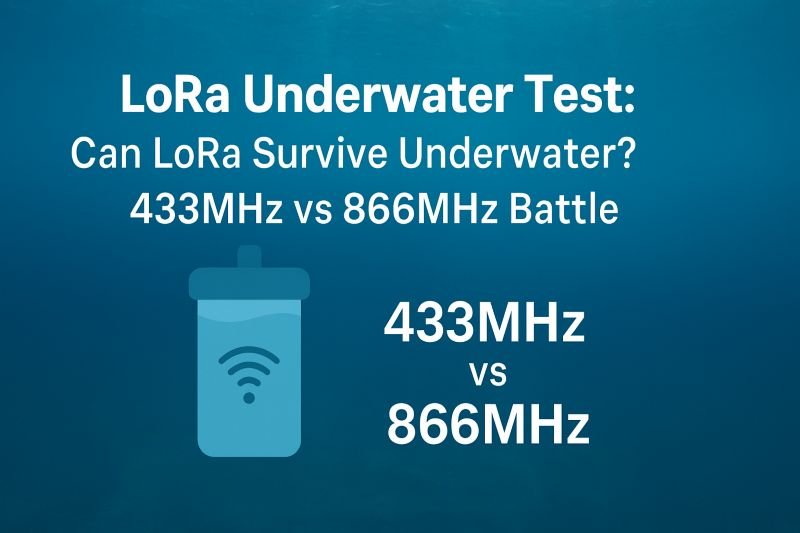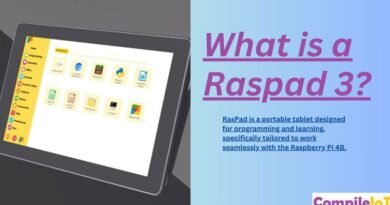Can LoRa Transmit Through Water? A Real-World Battle Between 433MHz and 866MHz
Wireless communication technologies have become the backbone of modern connectivity, spanning everything from smart cities and agriculture to industrial automation and maritime monitoring. One such technology, LoRa (short for Long Range), is a leading contender in the IoT space due to its long-range, low-power characteristics. But a pressing question remains for marine and aquatic applications: Can LoRa survive underwater? If so, which frequency band performs better in aquatic conditions—433MHz or 866MHz?
In this in-depth article, we dive—both figuratively and literally—into the underwater performance of LoRa technology, comparing the capabilities of the 433MHz and 866MHz bands when submerged. Let’s explore the science, real-world tests, and potential applications of underwater LoRa communication.
Understanding LoRa and Its Frequency Bands
Before we submerge into the test results, it’s important to understand how LoRa works and why frequency matters.
LoRa is a proprietary modulation technique based on Chirp Spread Spectrum (CSS) technology. It allows long-distance data transmission with very low power consumption, making it ideal for IoT devices that need to run for years on a single battery.
Common LoRa Frequency Bands
LoRa operates in unlicensed ISM (Industrial, Scientific, and Medical) bands, and the most common frequencies globally are:
-
433MHz: Used primarily in Asia.
-
868MHz: Widely used in Europe (some variations use 866MHz).
-
915MHz: Predominant in North America.
Each frequency band has unique characteristics in terms of range, signal penetration, and regulatory constraints. In general, lower frequencies penetrate obstacles better, while higher frequencies offer more bandwidth but are more prone to attenuation.
Radio Waves and Water: The Science of Attenuation
Water is an extremely hostile medium for radio frequency (RF) propagation. This is because water has a high dielectric constant and is electrically conductive, especially when it’s not pure (e.g., saltwater, dirty freshwater). These characteristics cause severe attenuation of electromagnetic waves.
As a result:
-
High-frequency RF signals (above 1GHz) typically fail completely underwater.
-
Lower frequencies (below 500MHz) can penetrate short distances under specific conditions.
This makes the 433MHz band a better theoretical candidate for underwater communications than 866MHz, but let’s put the theory to the test.
LoRa Underwater Test Setup
To assess LoRa’s underwater capabilities, several real-world tests were conducted. The primary goal was to compare signal reliability and range of 433MHz vs 866MHz when the transmitter is submerged underwater.
Equipment Used
-
LoRa Transceivers: Two sets—one operating at 433MHz and another at 866MHz.
-
Antennas: Tuned to respective frequencies.
-
Water Tank & Open Water (Lake) Tests: For controlled and real-world results.
-
Microcontrollers: Arduino or ESP32 used to control transmission.
-
Signal Analyzer: For RSSI (Received Signal Strength Indicator) and SNR (Signal-to-Noise Ratio) monitoring.
Test Scenarios
-
Shallow Water Test (0.5m depth)
-
Medium Depth Test (1.5m depth)
-
Deep Water Test (3m and beyond)
-
Surface to Submerged Communication
-
Submerged to Submerged Communication
The tests were performed in both freshwater and slightly saline environments to measure realistic attenuation levels.
Results: Can LoRa Survive Underwater?
Shallow Water (0.5m Depth)
-
433MHz: Successfully transmitted short messages at a distance of up to 8 meters.
-
866MHz: Signal degraded quickly; effective range was less than 3 meters.
Conclusion: At shallow depths, 433MHz shows clear superiority in penetrating water.
Medium Depth (1.5m Depth)
-
433MHz: Could still transmit data but with high packet loss. Communication was possible up to 2–3 meters.
-
866MHz: Communication failed consistently. The receiver couldn’t pick up any meaningful packets.
Conclusion: 433MHz begins to struggle at this point, but still has marginal utility. 866MHz is practically useless underwater at this depth.
Deep Water (3m+ Depth)
-
433MHz: No successful communication detected. Signal completely attenuated.
-
866MHz: Total failure as expected.
Conclusion: LoRa cannot function effectively beyond shallow depths, regardless of frequency.
Surface to Submerged Communication
-
When the receiver is above water and transmitter is slightly submerged, the 433MHz signal could be received up to 10–15 meters away (in air).
-
866MHz showed a shorter surface reception range and required near-line-of-sight.
Conclusion: Surface-to-submerged communication can work at 433MHz in niche scenarios, such as boat-to-buoy systems.
Submerged to Submerged Communication
-
433MHz: Marginal success only up to 1 meter underwater with less than 1 meter between nodes.
-
866MHz: Completely ineffective.
Conclusion: Submerged LoRa-to-LoRa communication is very limited, and generally not practical underwater.
Why 433MHz Performs Better Underwater
The superior underwater performance of 433MHz can be attributed to:
-
Lower Frequency → Lower Attenuation: Lower frequencies suffer less energy loss in conductive materials.
-
Longer Wavelengths: 433MHz signals (wavelength ~69 cm) are better suited to navigate through dense materials like water.
-
Antenna Design: Easier to optimize underwater antenna setups for lower frequencies.
However, even with these advantages, water remains an exceptionally challenging medium for RF. Acoustic or optical methods (e.g., sonar or blue/green laser) are generally better suited for underwater communication.
Practical Applications and Limitations
While LoRa is not designed for underwater communication, these test results show that:
-
433MHz can be used in very shallow water applications, such as:
-
Water level monitoring
-
Smart fishing traps
-
Surface buoys communicating with submerged sensors
-
-
866MHz should be avoided for underwater communication, even in shallow deployments.
What LoRa Cannot Do Underwater
-
Real-time deep-water communication
-
Long-distance submerged communication
-
Marine data relay without surface exposure.
Alternatives for Underwater Communication
If your use case involves submerged sensors or vehicles, here are better options:
-
Acoustic Modems: Common in submarine and underwater sensor communication.
-
Optical Communication: Effective in clear water but highly directional and power-hungry.
-
Magnetic Induction: Short range but stable in conductive environments.
However, for hybrid systems where data is collected underwater and transmitted when surfaced, LoRa can still play a key role.
Tips for Using LoRa Near or In Water
If you’re considering deploying LoRa-enabled devices in aquatic environments, follow these best practices:
-
Use the 433MHz band if underwater use is required.
-
Waterproof your antenna and use materials with minimal RF absorption.
-
Minimize distance between nodes and avoid complete submersion where possible.
-
Mount antennas vertically and close to the surface to maximize transmission.
-
Implement data buffering so that nodes can store data and transmit when surfaced.
Final Verdict: LoRa Underwater
LoRa is a phenomenal technology for terrestrial and open-air IoT applications, but when it comes to underwater communication, its performance is limited and highly constrained.
-
Can LoRa survive underwater? Technically, yes—but only in shallow water and over very short distances.
-
433MHz vs 866MHz underwater? 433MHz clearly wins due to better penetration and lower attenuation.
-
Is it practical? Only for specific edge cases or hybrid systems with surface communication relays.
For most underwater communication needs, purpose-built solutions like acoustic modems remain the gold standard.
Our Thoughts
The battle between 433MHz and 866MHz in underwater environments has a clear victor, but the real takeaway is that LoRa should be seen as a surface communicator for underwater systems, not a true underwater networking solution. If you’re exploring marine IoT, your best bet is to combine the power efficiency of LoRa with appropriate technologies tailored for underwater signaling.
Let us know your thoughts or experiments with LoRa in aquatic setups. Have you pushed it to its limits in a creative way?








